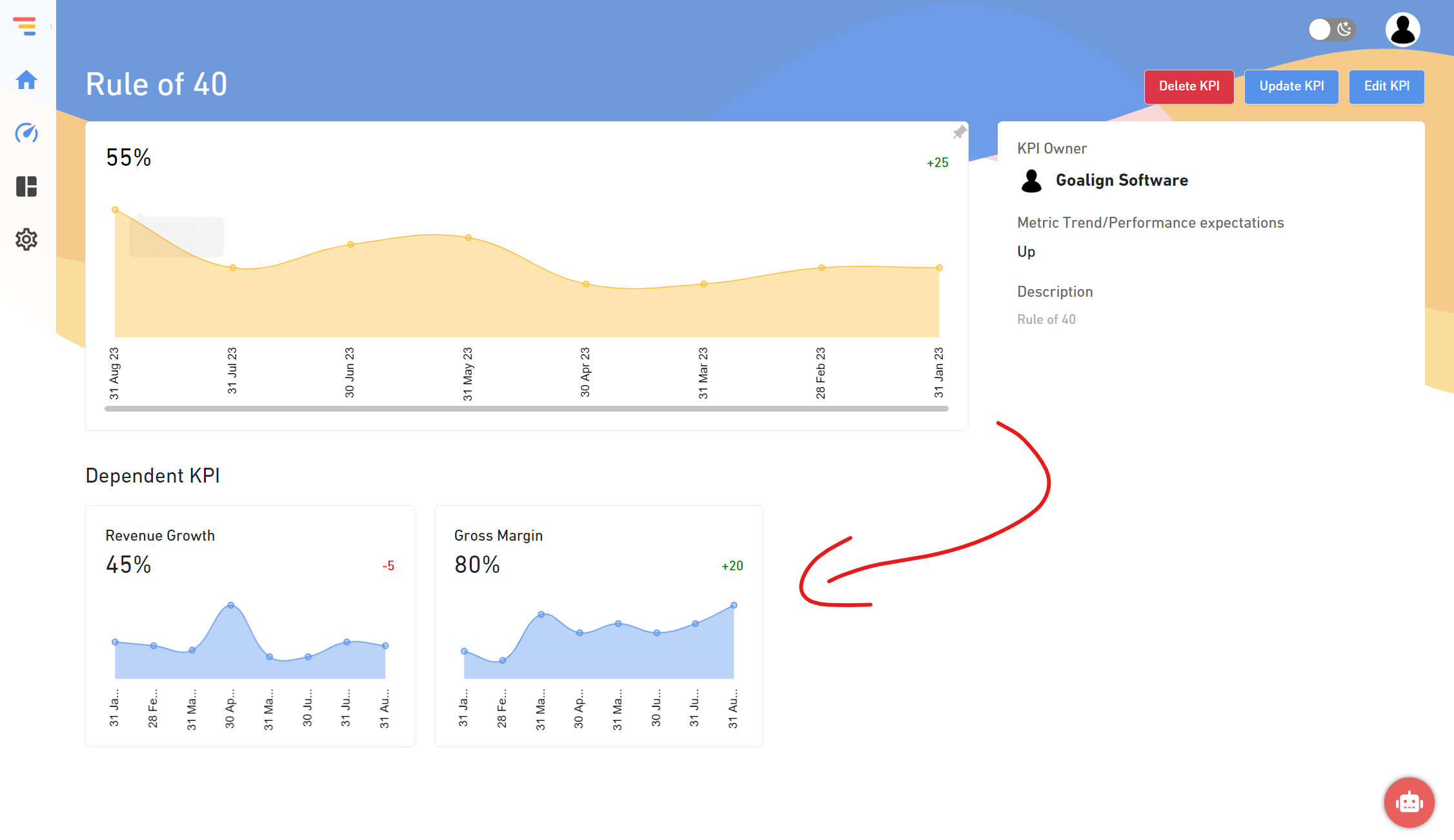Financial KPI (Key Performance Indicator) is a quantifiable statistic that shows how successfully a firm generates revenue and profits. In addition, monitoring KPIs reveals if a company is meeting its long-term objectives.
Every firm, regardless of size, age, or sector, must be aware of its financial performance. While accountants handle all spending, revenue, and budgets, the company’s leadership must also be kept up to date on critical financial metrics.
Financial Key Performance Indicators
Financial KPIs (key performance indicators) are measurements used by businesses to monitor, evaluate, and assess their financial health. These financial KPIs are classified into many groups, including profitability, liquidity, solvency, efficiency, and valuation.
Understanding these measures will put you in a better position to assess how the firm functions financially. You may then use this information to revise your department’s or team’s goals and contribute to crucial strategic objectives.
These measurements and KPIs should be made accessible to management inside and delivered weekly or monthly through email updates, dashboards, or reports. If they are not widely available, you may acquire acquainted with the metrics via financial statement analysis.
Popular Financial KPIs for Your Financial KPI Dashboard
1. Cash Flow from Operations (OCF)
The OCF represents the amount of money a company earns daily. The financial statistic indicates whether a firm can sustain the positive cash flow required for growth or needs external finance to cover all costs.
Operating cash flow is computed by adjusting net income for depreciation, inventory adjustments, and changes in accounts receivable. Compare your OFC to total capital employed to see if your organization generates enough capital to maintain the accounts positively.
2. Present Ratio
The current ratio measures an organization’s capacity to meet all financial commitments in a year. This financial KPI considers a company’s existing assets, such as account receivables, and its current liabilities, such as account payables.
How to Assess Your Current Ratio A Current Ratio of less than one suggests that your firm will be unable to meet all financial commitments unless extra cash flow is generated. A good Current Ratio is between 1.5 and 3. However, it’s common for firms to experience periods with a Current Ratio of less than one, mainly if the company is investing in expansion or incurring debt.
3. Acid Test / Quick Ratio
The acid-test ratio determines if a company has enough short-term assets to meet its near-future obligations. Because it excludes liquid assets such as inventory, the Quick Ratio provides a more realistic picture of a company’s financial health than the Current Ratio.
4. Rate of Burn
This financial KPI represents how much money a firm spends on a weekly, monthly, or yearly basis. This fundamental statistic may help small businesses that need comprehensive economic research.
Compared to Net Profit Margin and Revenue, the Burn Rate reveals if the organization’s long-term expenditures are sustainable.
5. Gross Profit Margin
This indicator indicates how profitable a firm is in its revenue. This KPI, which is sometimes expressed as a percentage, reveals how much of each dollar generated by the firm turns into profits.
The Net Profit Margin represents a company’s profitability and demonstrates how quickly it may expand in the long run.
6. Margin of Gross Profit
The Gross Profit Margin is the percentage of money left over after deducting the cost of items sold from revenue. This statistic is an excellent predictor of a firm’s financial health, demonstrating if a company can pay its operational expenditures while still having cash available for expansion.
Unless significant changes influence manufacturing costs or pricing regulations, companies usually maintain a relatively steady Gross Profit Margin statistic.
7. Working Capital
The Working Capital KPI assesses an organization’s existing assets for meeting short-term financial commitments. Working capital contains available cash, short-term investments, and accounts receivable, demonstrating the business’s liquidity.
Working Capital refers to cash that is immediately accessible. Read accessible assets that fulfill short-term financial obligations to assess financial health. Working capital is defined as the difference between current obligations and current assets, and it includes assets such as cash on hand, short-term investments, and accounts receivable.
8. Accounts Receivable (Current)
This financial KPI calculates the amount of money owed to a company by its creditors. The Current Accounts Receivable statistic assists in estimating future revenue and calculating average debtor days, which shows how long it takes an average business partner or customer to repay their debt.
A high Current Accounts Receivable statistic may suggest that a company cannot cope with long-term creditors and, as a result, is losing money. When individuals or businesses fail to pay their payments, they are said to be in default.
9. Accounts Payable in the Present
In contrast to receivables, the Current Accounts Payable statistic represents the amount owed by a company to its suppliers, banks, and creditors. Therefore, it may be split down by business departments, divisions, and projects to provide a complete picture of current payables.
Companies must consider all obligations paid within a specific time to calculate Current Accounts Payable.
10. Accounts Payable Turnover
This financial KPI represents the rate at which a company pays its average due amount to suppliers, banks, and other creditors.
Here’s how to figure out your Accounts Payable Turnover: Assume a corporation makes $10 million in supplier purchases in a month and has a $2 million Accounts Payable balance at any time. This indicates that the Accounts Payable Turnover of $10 million divided by $2 million equals $5 million.
If the turnover ratio falls compared to past periods, it may suggest that a company is having difficulty repaying its debt. Conversely, if a company’s turnover rate rises, it reimburses its suppliers faster than previously.
11. Cost of Accounts Payable Processing
The Accounts Payable Process Cost represents processing all payments and invoices for a given time.
According to the findings of APQC’s study on accounts payable (AP) process efficiency, there is a compelling argument for investing in electronic invoice presentment, processing, and payment (EIPP) systems, which considerably reduce the cost of processing invoices and paying suppliers.
12. Income Produced From Receivables
Accounts Receivable Turnover demonstrates a company’s ability to recover debts and offer credit. For example, if a corporation keeps a substantial open bill for a client, it essentially gives away an interest-free loan rather than utilizing the money to build the business.
Companies must divide the net value of credit sales during a particular period by the average accounts receivable during the same time to calculate Accounts Receivable Turnover. The formula is comparable to Accounts Payable Turnover: net value of credit sales/accounts receivable.
The lower this financial statistic, the less a company suffers with collecting debts and payments, resulting in more assets available for expansion and innovation.
Conclusion
You may measure and analyze several more financial KPIs to better understand your company’s performance and how your actions affect progress toward common objectives. If you’re new to finance, the financial KPIs described above are an excellent place to start. Understanding how these measurements impact corporate strategy is a fundamental financial accounting ability that all managers should acquire.






